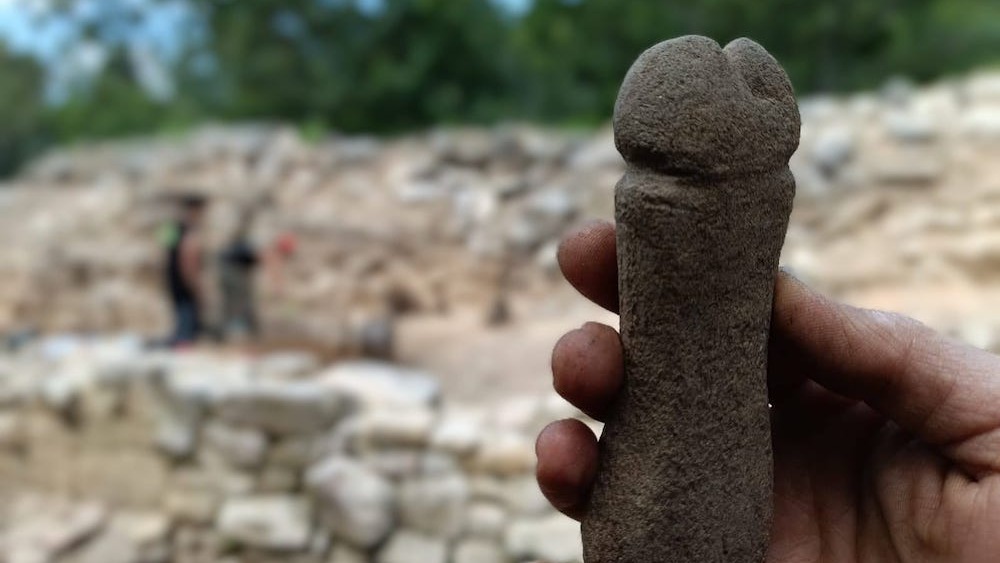6-inch stone penis was used to sharpen weapons in medieval Spain
Archaeologists in Spain unearthed the sword-sharpening stone with an eye-catching shape in a destroyed 15th-century tower.

A carved stone penis found buried in the rubble of a demolished medieval Spanish tower was likely used to sharpen weapons.
Archaeologists with Arbore Arqueoloxía, an archaeology cooperative, found the 6-inch-long (15 centimeters) artifact on May 19 during an excavation at an archaeological site in the Ría de Vigo estuary of northwestern Spain. The site once housed a medieval complex punctuated by a tower that had been destroyed during the Irmañdino Revolts, a series of battles that unfolded during the mid-15th century in which citizens rose up against the ruling nobility, archaeologists said in a statement.
"It is an interesting object because it is unusual and because it materializes the symbolic association between violence, weapons and masculinity, an association that we know existed in the Middle Ages and that is present in our culture today." Darío Peña-Pascual, an archaeologist with Arbore Arqueoloxía, told Live Science in an email.
While it's not uncommon for archaeologists to find sharpening stones at various medieval sites around the world, the phallic shape of this artifact makes it stand out.
Related: Heavy rains expose ancient phallus and 'imposing' face carvings at Roman fort in Spain
Sharpening stones are easy to identify "as they still hold traces and marks of the materials they sharpened," Peña-Pascual said. In this case, "the object retains traces of wear on one side compatible with its use as a sharpening stone."
Although the archaeologists aren't sure of the piece's exact meaning, they think its location at the destroyed tower offers a clue.
Get the world’s most fascinating discoveries delivered straight to your inbox.
"The possible meaning that a culture gives to an object is much more difficult to understand," Peña-Pascual said. "The context in which we find the stone penis is that of a fortress destroyed during an anti-seigneurial revolt." (A seigneurial is the territory held by a feudal lord.)
The phallic symbol during that time was considered an "object of veneration" and was not considered vulgar. It was used as protection from evil and has been depicted in numerous medieval artifacts, such as lamps, masks, pendants and rings, according to the statement.
Jennifer Nalewicki is former Live Science staff writer and Salt Lake City-based journalist whose work has been featured in The New York Times, Smithsonian Magazine, Scientific American, Popular Mechanics and more. She covers several science topics from planet Earth to paleontology and archaeology to health and culture. Prior to freelancing, Jennifer held an Editor role at Time Inc. Jennifer has a bachelor's degree in Journalism from The University of Texas at Austin.
